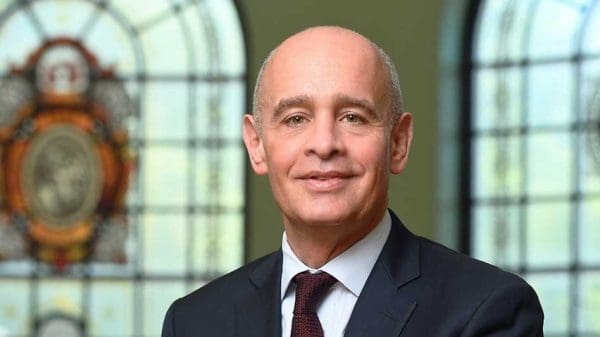The summer before I began my job as dean, I was frantically trying to finish a book manuscript that was due to the publisher during my first semester at the Krieger School. My reward at the end of every day at the computer was to watch an episode or two of The Wire, the epic tale of Baltimore’s modern social history. As the series has millions of fans around the world, I was hardly unique in my complete fixation on the characters and the gritty story of street life, the working class docks, the machinations of City Hall, the efforts of social workers and teachers to rescue troubled kids in the schools, and the cat and mouse pursuits of the police department. When I reached the end of The Wire (and the completion of my book), I hardly knew what to do with myself.
So I moved to Baltimore! As a sociologist with long-standing interests in the lives of the nation’s working poor, I was eager to embed myself in my new home town. I have not been disappointed. In my first year at the helm of the Krieger School, I have been welcomed by the staff of Mayor Stephanie Rawlings-Blake, who taught me about the many remarkable programs unfolding here to address public safety, employment for teenagers, literacy, the consumption of healthy food, innovative housing for low-income artists, and reform of the city’s school system.
Nonprofit foundations—from the Annie E. Casey and Abell foundations to the Associated Black Charities and Catholic Charities —whose leaders have welcomed my interest in their work, are at the forefront of innovative programs to increase minority business ownership, foster entrepreneurship, and care for the homeless and the hopeless. Our sister universities, from the historically black university of Morgan State, to our public partners, the universities of Maryland and Baltimore, provide robust educational opportunities for thousands of Maryland students here in the city. It has been a privilege to meet the many talented people who put shoulder to wheel to make it a better place.
When President Ron Daniels arrived at Hopkins in 2009, he called for a new level of engagement for our university in the life and future of Baltimore. I could not agree with him more. Indeed, one of the most exciting parts of my job involves thinking of ways to combine the basic mission of the university—to educate the next generation of leaders— with its responsibilities as the largest employer (in partnership with the Johns Hopkins Hospital and Health System) in Maryland. Universities like ours are engines of economic growth, sources of innovation that lead to new employment opportunities, and partners to social service agencies, the public school system, museums, and other cultural institutions that matter in the city’s quest to becoming a tourist destination and a community of thriving neighborhoods for residents of long standing.
Our greatest resources in this evolution are our students and our faculty. In this issue of the magazine, you will read about our new summer internship program that places our undergraduates in nonprofit social service organizations, where they have an opportunity to contribute in a serious way to the improvement of the lives of Baltimore’s neediest citizens. Having spoken to a number of the “summer scholars,” I know that the experience has changed their lives. Some have determined that their summer mission will become their life’s mission. But whatever this program has done for them as individuals, it has done even more for the Krieger School itself. These young people are leading the way in defining a new relationship with our neighbors.
Our faculty constitutes an immense well of people whose theoretical and substantive work can and does make a difference in Baltimore and, as a policy voice, in the nation’s capital nearby. Robert Moffitt, in the Department of Economics, works on the labor supply decisions of female heads of households in response to the country’s welfare policies. Karl Alexander, chair of the Department of Sociology, studies what determines persistence in school attendance and how we can identify precursors to dropping out, while his colleague Stefanie Deluca is working on how vocational education has the potential to boost the graduation rate of young people from low-income households. Our political scientists study the formation of public policies that impact cities like Baltimore and the role that interest groups play in the allocation of federal dollars. The historians in Gilman Hall are combing the archives to understand how the patterns of stratification and disparity we live with today have evolved over the last two centuries. The artists in our theater, dance, visual arts, and museum programs are out in the community every day adding to the creative stock of Baltimore. And the list goes on.
These colleagues are a brain trust for the city we call home, and we are looking for opportunities to engage their talents and increase national attention to the work they do as the country confronts the most serious economic and social challenges since the 1930s.
I cannot think of a more opportune moment or a more talented community to link arms with the city we call home.
Sincerely,
Katherine Newman


